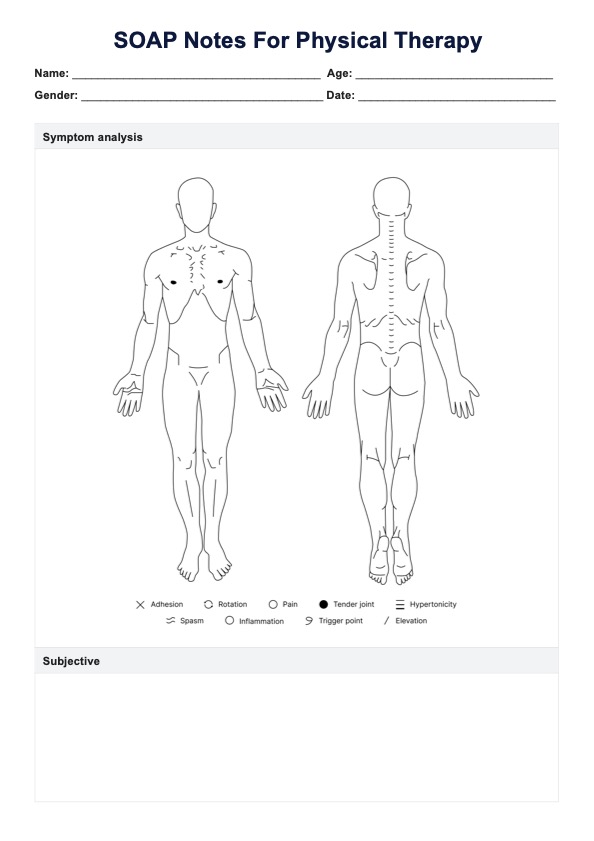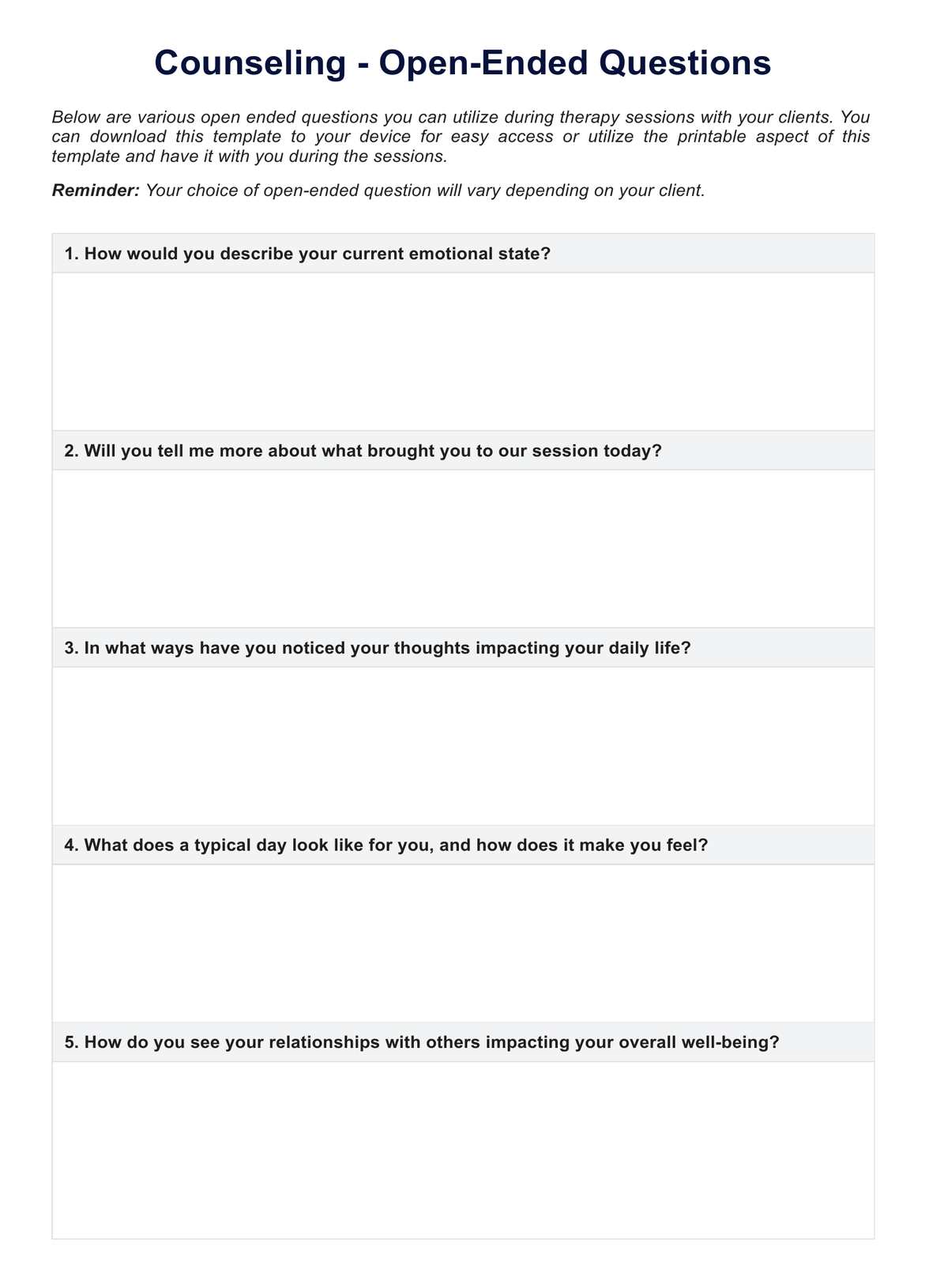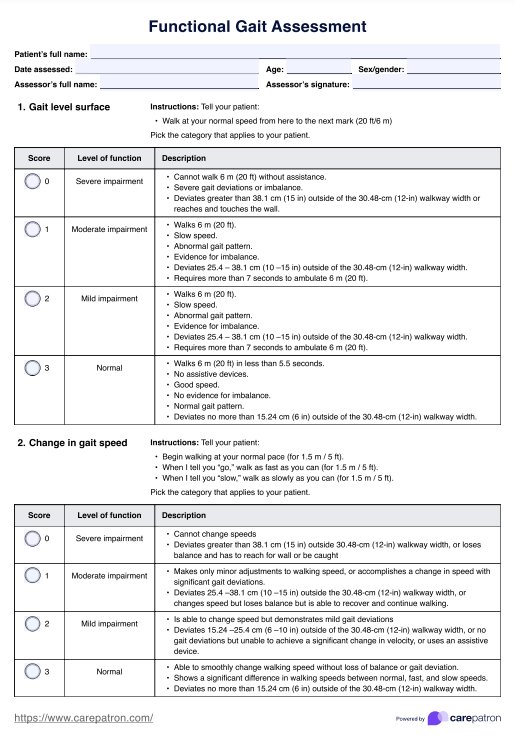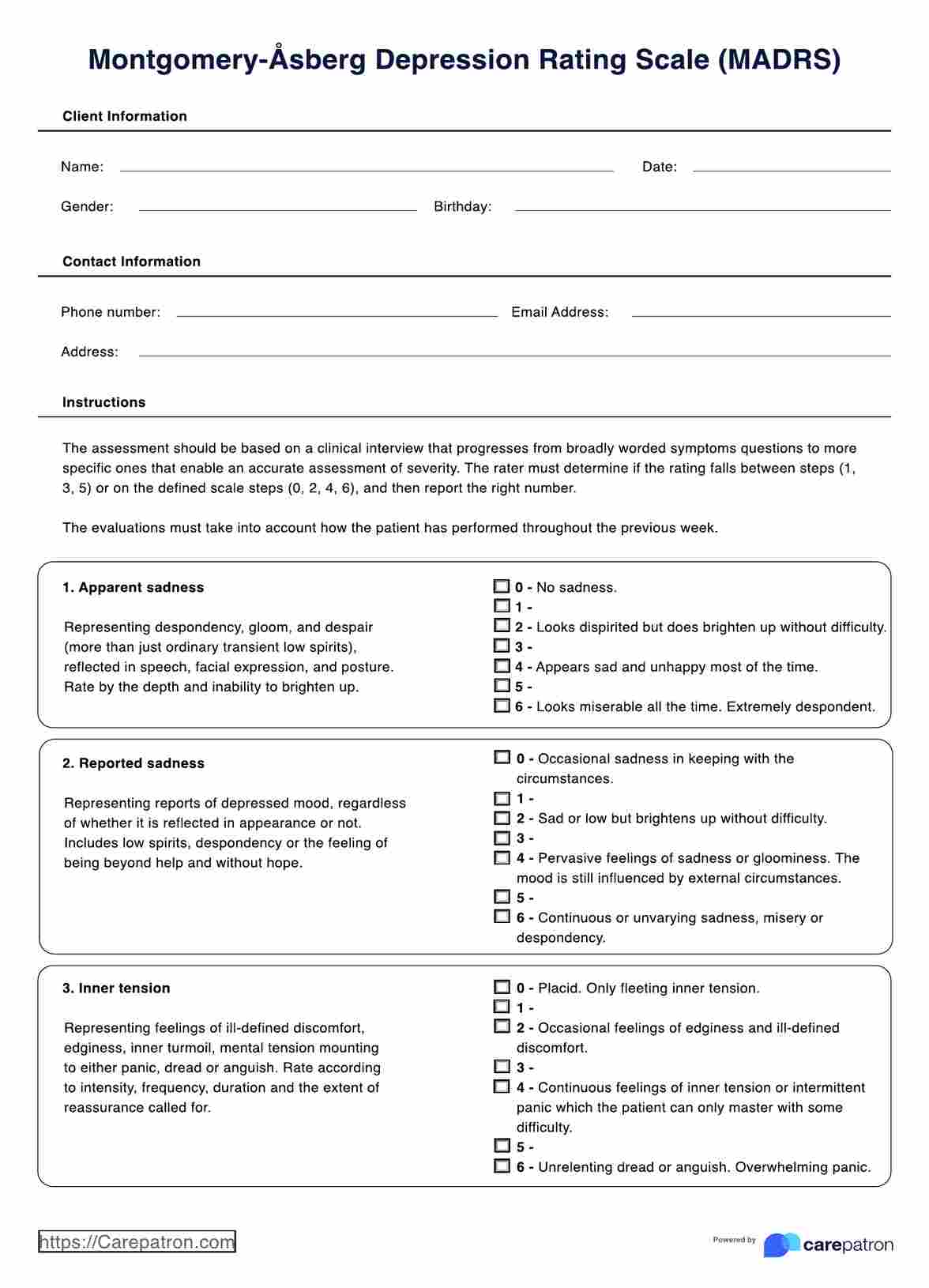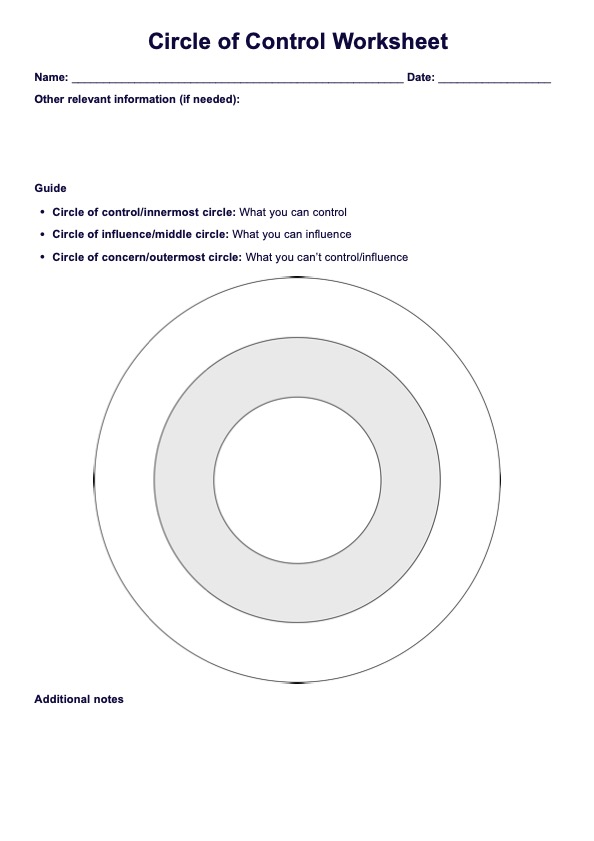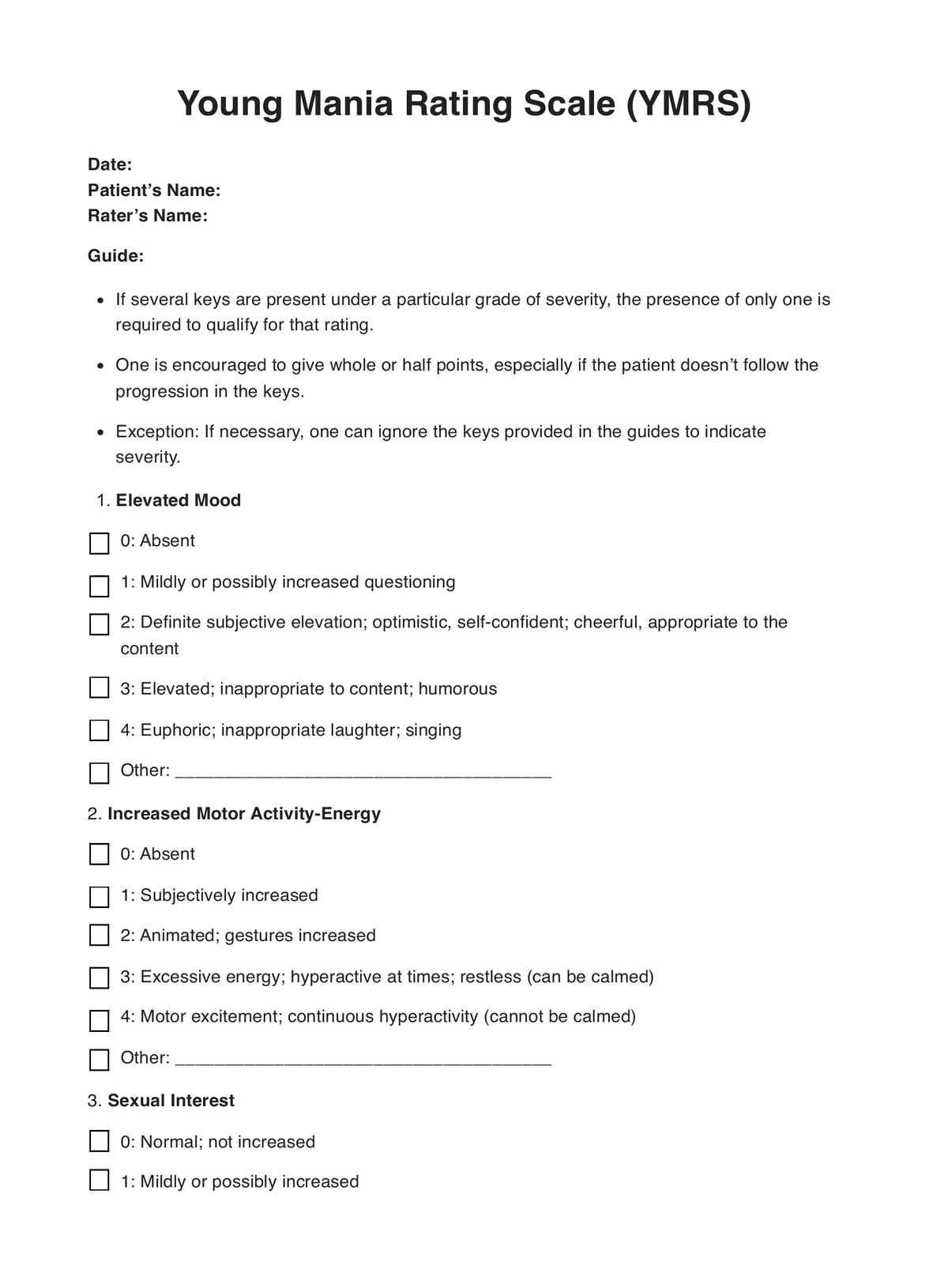Autism Worksheets
Discover engaging and educational Autism Worksheets for effective learning and development. Improve skills and promote inclusion. Boost progress now!


Autism spectrum disorder (ASD) affects individuals differently, presenting unique challenges and opportunities in educational and healthcare settings. This guide offers insights into an effective worksheet tool for strategies for children and students with autism, aiming to support their learning and development.
Autism Worksheets Template
Autism Worksheets Example
How does it work?
Using a Printable Autism Worksheet Template is a straightforward process that involves several simple steps. Here is a breakdown of how it works:
Access the template
Begin by obtaining the Printable Autism Worksheet Template. It can be downloaded from educational websites and online special education resources or created using software applications like Microsoft Word or Google Docs.
Customize the worksheet
Open the template and personalize it according to the specific needs of the individual with autism. This may involve the person adding their name, age, and current date to create a sense of ownership and relevance.
Section 1: Communication skills
The worksheet is typically divided into sections, each targeting a specific skill area. Start with the Communication Skills section, which may include expressive and receptive language tasks. Follow the instructions, fill in the words and blanks, or complete the exercises.
Section 2: Social skills
Proceed to the Social Skills section, which focuses on enhancing social interactions and perspective-taking abilities. Engage with the prompts, scenarios, or questions provided. Encourage thoughtful responses and provide support when needed.
Section 3: Sensory processing
Move to the Sensory Processing section, which addresses sensory preferences and related challenges. Encourage individuals to express their preferences or circle the options that best represent their sensory experiences. Visuals and descriptions may be included to further vocabulary and assist comprehension.
Section 4: Executive functioning
Transition to the Executive Functioning section, which aims to develop planning, organization, and time management skills. Follow the instructions and provide examples or guidance if required. Encourage the individual to complete the given tasks independently.
Section 5: Emotion regulation
Conclude with the Emotion Regulation section, which helps individuals identify and cope with emotions effectively. Engage autistic students in activities such as matching emotions with facial expressions or describing healthy coping strategies.
Review and reflection
After completing each section, review the students' and individuals' responses. Offer positive reinforcement, discuss growth areas, and provide constructive feedback to foster a growth mindset.
Repeat and track progress
As the individual works through the Printable Autism Worksheet Template, repeat the process regularly to teach, reinforce learning, and track progress. Use the template as a starting point and modify it to create new worksheets addressing evolving skills and goals.
Using this worksheet provides a structured and organized approach to skill development. It allows individuals with autism to engage actively, practice essential language skills together, and promote learning in a customizable and accessible format.
When would you use this Template?
The Autism Worksheet Template is a versatile resource that can support individuals with autism spectrum disorder (ASD) in their learning and development. Here are some critical scenarios and instances where this template proves to be highly useful:
Classroom Settings
Teachers and special education professionals can utilize the Autism Worksheet Template as a valuable tool in inclusive classrooms. It can be incorporated into lesson plans, individualized education plans (IEPs), or supplemental materials to reinforce and assess specific skills targeted in the curriculum.
Therapy Sessions
Speech therapists, occupational therapists, and other therapists working with individuals on the autism spectrum can integrate the template into their therapy sessions. It provides structured activities that promote targeted skill development, allowing therapists to assess progress, provide targeted interventions, and encourage active engagement.
Home-Based Learning
Parents and caregivers can utilize the Autism Worksheet Template to create structured learning opportunities at home. It offers a clear framework for engaging individuals with autism in skill-building exercises and can be incorporated into daily routines or homework assignments.
Individualized Education
The template can be customized to meet the unique needs and goals of each individual with autism. Whether in a school or home setting, it can be tailored to focus on specific areas of improvement, such as communication, social skills, sensory processing, executive functioning, and emotion regulation.
Progress Tracking
The Autism Worksheet Template is a tangible tool for tracking progress and monitoring skill development over time. It allows educators, therapists, parents, and individuals themselves to identify strengths, areas for improvement and set new goals based on the individual's unique needs.
Resource for Support Groups
Support groups or community organizations dedicated to autism awareness and support can utilize the template as a resource for structured activities during group sessions. It encourages participation, fosters social interaction, and promotes skill development among individuals in the group.
By using the Autism Worksheet Template in these instances, educators, therapists, parents, and individuals with autism can create structured and engaging learning experiences. It promotes active participation, tracks progress, and targets specific skills in a customizable and accessible format.
Benefits
Using the Free Autism Worksheet Template offers several benefits for individuals with autism spectrum disorder (ASD) and those supporting their learning and development. Here are the key advantages:
Structured learning
The template provides a structured framework for skill development, offering clear instructions and organized activities. This structure helps individuals with autism navigate tasks, promoting a sense of order and predictability.
Personalization
The template can be customized to meet each student's needs and goals. Tailoring the activities and prompts ensures the content is relevant, engaging, and aligned with the individual's abilities.
Targeted skill development
The template addresses various domains relevant to autism, including communication, social skills, sensory processing, executive functioning, and emotion regulation. It allows for focused practice and targeted skill development in specific areas of need.
Visual supports
Visual aids are commonly used in the template, leveraging the visual learning strengths often observed in individuals with autism. Visual supports enhance reading comprehension further, facilitate communication, and make the activities more accessible and engaging.
Progress tracking
By using the template chart consistently, progress can be tracked over time. It provides a tangible way to document and monitor skill development, allowing educators, therapists, parents, and individuals to observe growth and identify areas for further improvement.
Flexibility and versatility
The template is flexible and adaptable, accommodating various learning styles, preferences, and abilities. It can be used in different settings, such as classrooms, therapy sessions, preschool, or home, making it a versatile resource for diverse learning environments.
Research & Evidence
Autism worksheets are an educational resource designed to help children with autism spectrum disorder (ASD) learn new skills and concepts. They can be used in various settings, including schools, homes, and clinics.
The history of autism worksheets dates back to the early 1990s. At that time, there was a growing awareness of the need for specialized educational resources for children with ASD. Autism worksheets were one of the first resources to be developed specifically for this population.
Since the early 1990s, there has been a growing body of research on the effectiveness of autism worksheets. This research has shown that autism worksheets can help children with ASD learn new skills and concepts. However, it is essential to note that not all autism worksheets are created equal. Some worksheets are more effective than others.
The following are some of the research findings on the effectiveness of autism worksheets:
- A study published in "Research in Autism Spectrum Disorders" found that children with ASD who used autism worksheets improved their language and literacy skills.
- A study published in the journal "Journal of Autism and Developmental Disorders" found that children with ASD who used autism worksheets significantly improved their social skills.
- A study published in the journal "Developmental Disabilities Bulletin" found that children with ASD who used autism worksheets improved their academic skills.
Overall, the research on the effectiveness of autism worksheets is promising. However, it is essential to note that not all autism worksheets are created equal.
Also, utilizing this autism spectrum test template can enhance your practice and optimize client outcomes.
Commonly asked questions
Math worksheets, tracing sheets, and activities involving matching and language skills are beneficial for students with autism.
An effective organizational strategy is to keep worksheets sorted by type (matching, rhyming, sorting, etc.) or by theme/unit in binders.
Positive strategies when using Autism Worksheets include visual support, video modeling, prompting, reinforcement, and time delay.


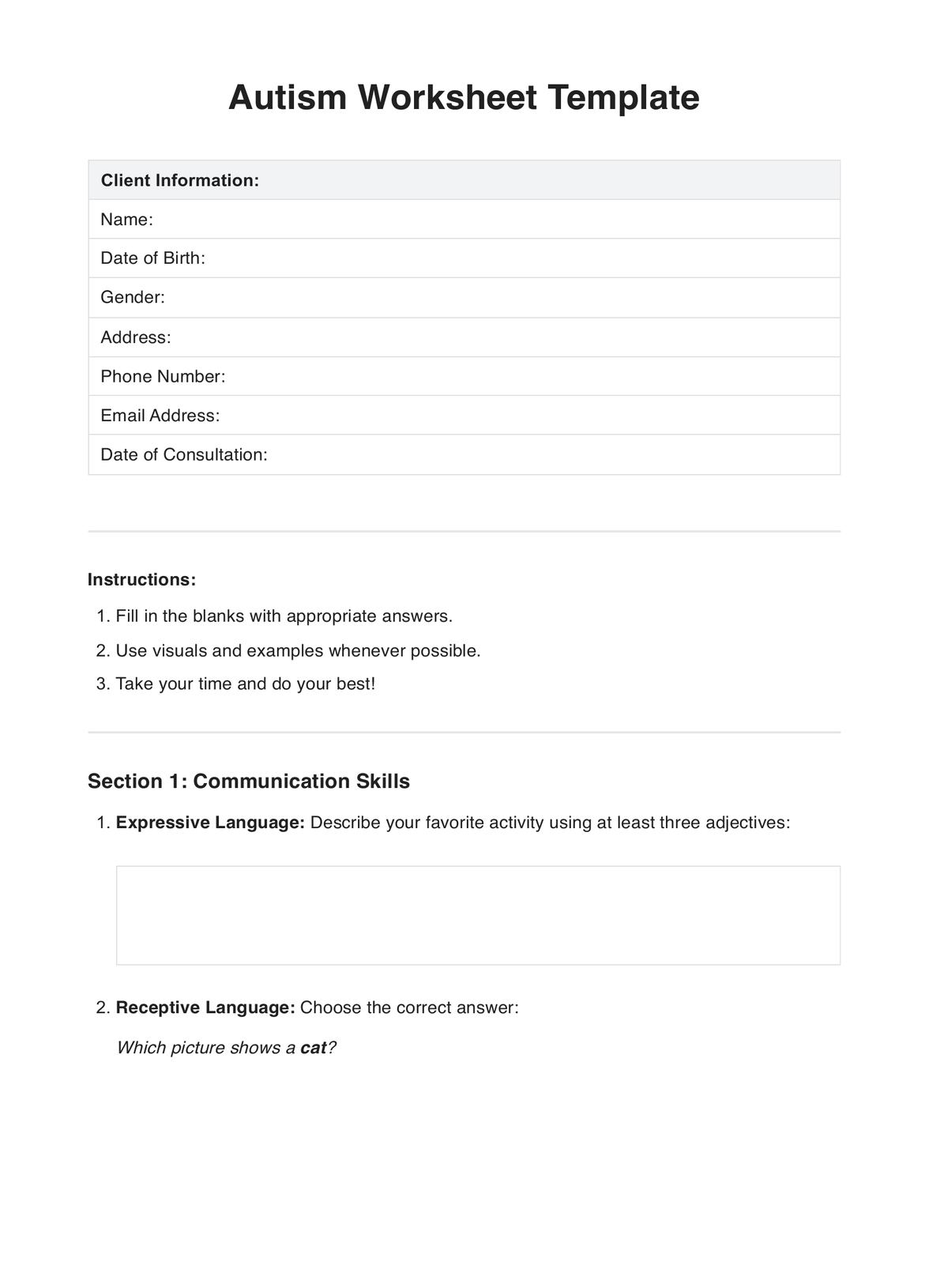
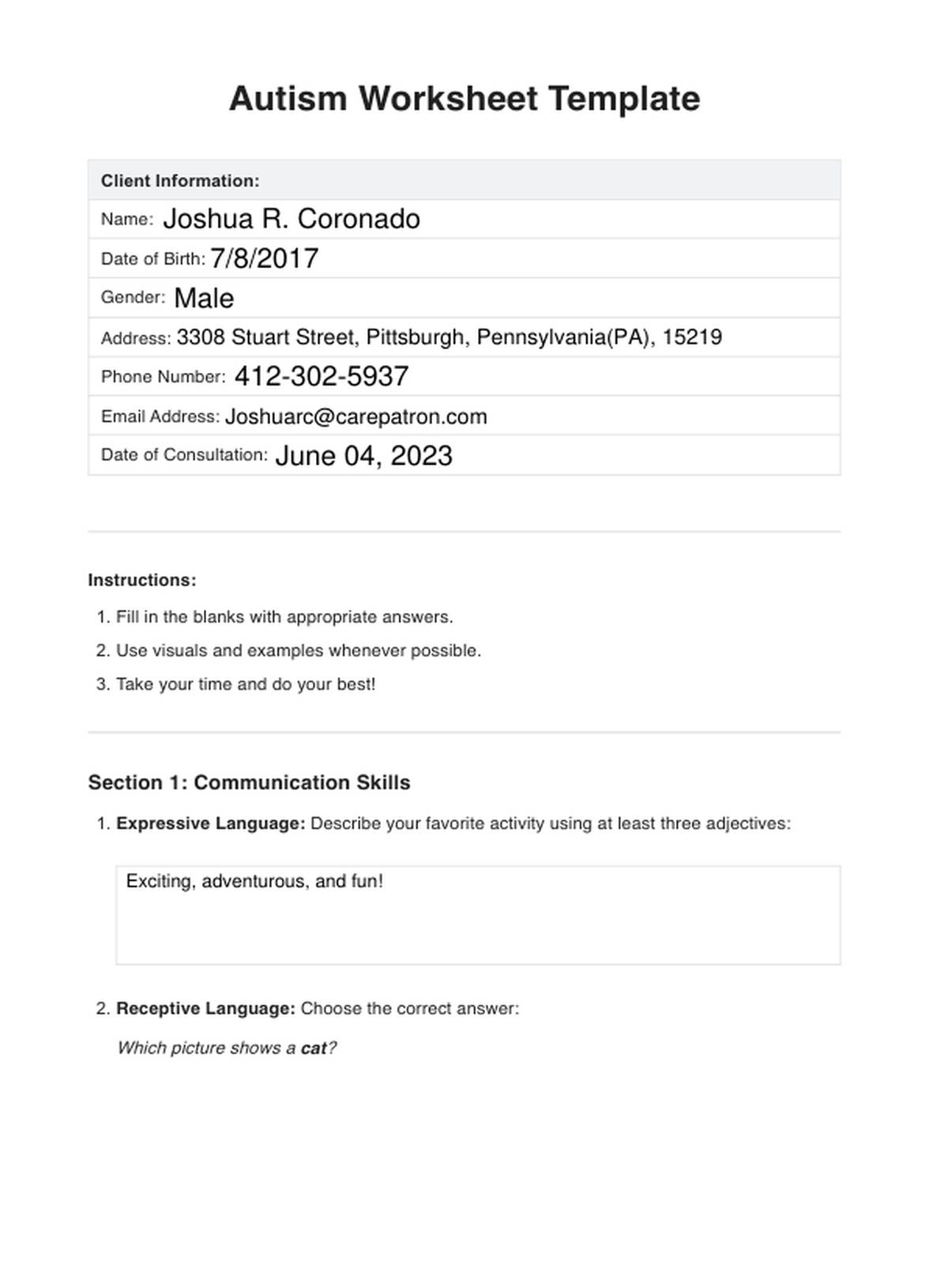

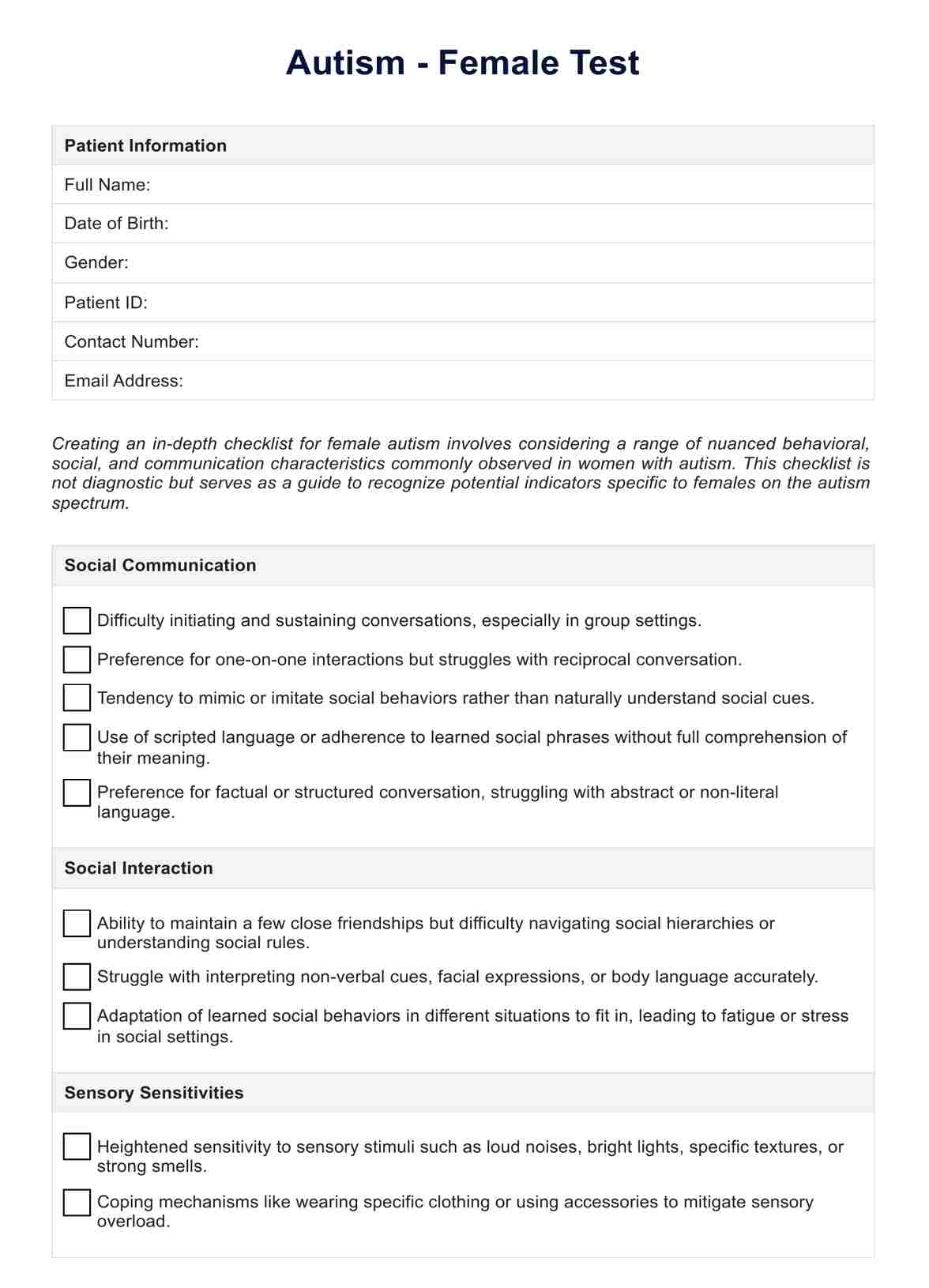
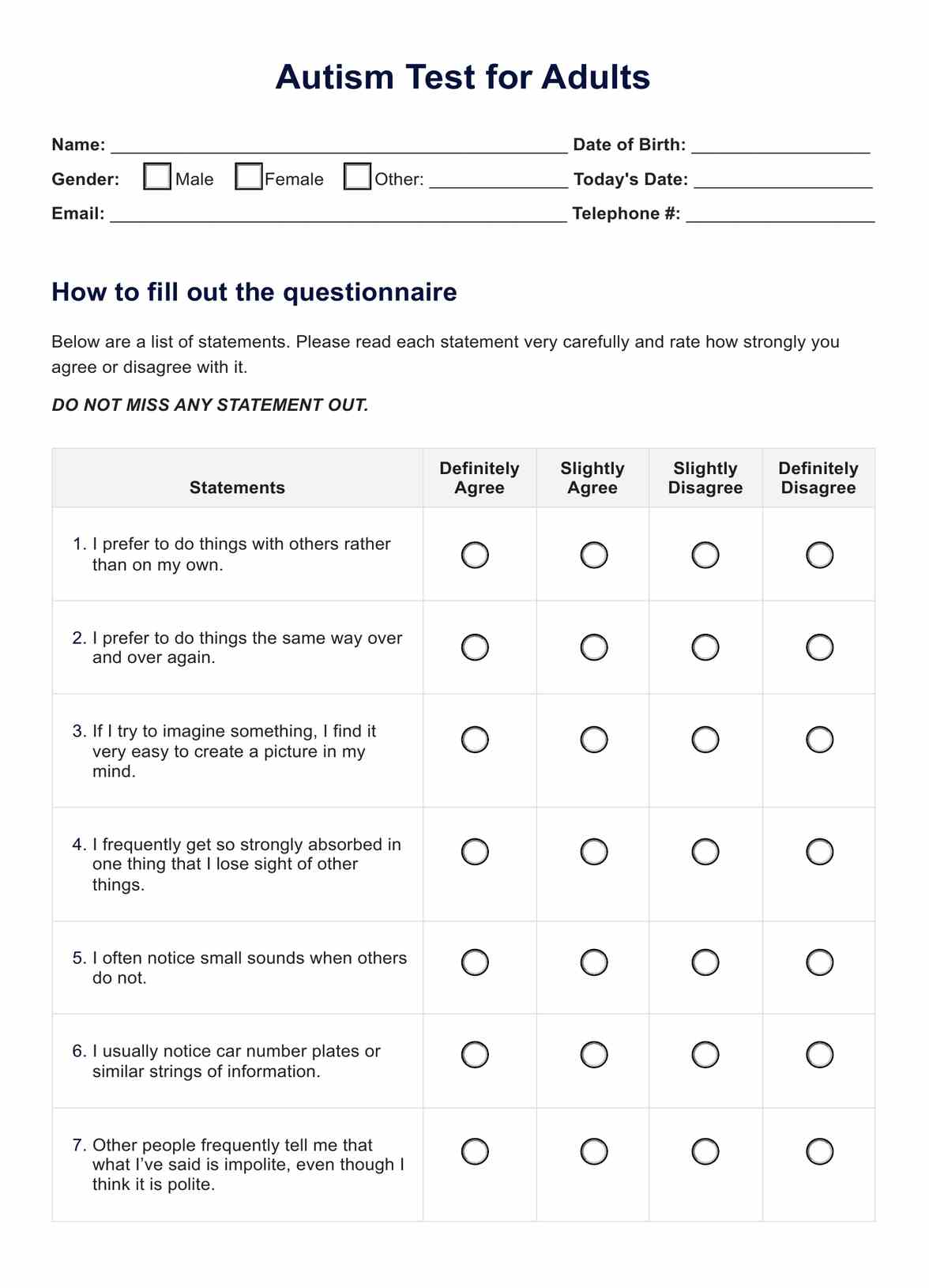
















-template.jpg)
























































































